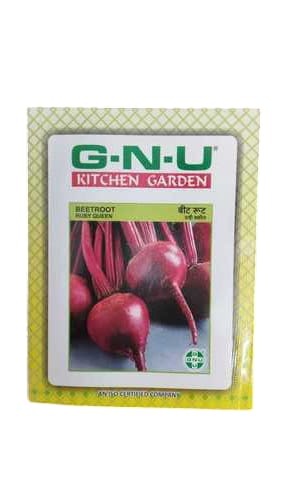Seed Beetroot
Experience the joy of homegrown, vibrant, and nutrient-rich beetroots! our beetroot seeds, perfect for kitchen gardens, farms, and container gardening..
Growing beetroot in India is relatively easy, as it thrives in cool temperatures and well-drained soil. Here’s a step-by-step guide:
Best Time to Grow
- The ideal season for beetroot cultivation in India is October to March (cooler months).
- In regions with mild summers, beets can also be grown in early monsoon (June–July).
Selecting a Variety
- Ruby Queen is a high-yielding and disease-resistant variety (suitable for Indian conditions).
Soil Preparation
- Beetroot grows best in loamy, well-drained soil, enriched with organic compost or well-rotted cow dung before planting. Ensure the soil is loose and free from stones to allow beetroots to form properly.
Sowing the Seeds
- Soak beetroot seeds in water for 6–12 hours before planting to improve germination. Sow seeds 1-2 cm deep and 8-10 cm apart in rows with a gap of 25-30 cm. Thin out seedlings once they sprout to avoid overcrowding.
Watering & Care
- Water regularly, especially during dry periods, but avoid waterlogging. Keep the soil moist but not soggy. Mulch with dry leaves or straw to retain moisture and prevent weed growth.
Fertilization
- Use organic fertilizers like vermicompost or cow dung manure every 3–4 weeks. Avoid excessive nitrogen fertilizers, as they promote leaf growth instead of root development.
Pest & Disease Management
- Common pests: Aphids, leaf miners, and caterpillars. Use neem oil or organic insecticides if needed.
- Fungal diseases like powdery mildew can be prevented by avoiding excessive watering.
Harvesting
- Beetroots are ready for harvest in 50-70 days when they reach 5-8 cm in diameter.
- Gently loosen the soil and pull out the beets along with their leaves.
